This morning, I received the following email from Ben Shelef at the Spaceward Foundation, wrapping up 2007 – a great year for the Space Elevator community. If you want to get on the Spaceward Foundation’s email list, just visit them at their Homepage and sign up.
Spaceward Foundation News Bulletin
Newsletter #4 – December 31, 2007
Hello folks, and Happy New Year!It’s been a while since our last newsletter – seems that whenever something’s going on in Space Elevator land, we’re always too busy to write. 🙂 Two months after the 2007 games, this is a good time to briefly reflect on this past year, and update you on our next steps for ’08 and beyond.In this newsletter:
- A look back at 2007
- A preview of our plans for 2008
- A new partner
- Carbon Nanotube news
2007:For those who missed the real-time action, the official wrap-up of the 2007 Spaceward Games is posted online at www.spaceward.org/games07Wrapup.html. As usual, you can re-live the day-by-day coverage at the archives at Ted Semon’s
Space Elevator Blog and Marc Boucher’s
Space Elevator Reference.The most significant result of the 2007 games, however, is not measured in units such as kilograms or in meters per second. What we saw in 2007 was a huge leap in the level of technology fielded by the teams. In particular, our two laser-based teams, USST and LaserMotive, designed and built complex advanced systems worthy of an aerospace project, and have acquired a set of capabilities that attracted industry interest to our competition. In terms of fulfilling the charter of the games, we could not have asked for more.Looking back, you may remember that Space Elevator games did not exist before 2005. Unlike our role models – Solar car races and rocketry clubs, we did not have a rich tradition of games spanning tens of years to rely on. We started practically from scratch, and we are immensely proud of how our teams have grown.
Having wrapped up the games, our next order of business was charting the course for 2008. The immediate choices we looked at were keeping the challenge goals the same as in ’07, doubling the speed or height requirements, or doubling both. However, after gathering feedback from existing and potential teams, the Space Elevator community, and relevant industry experts, we decided to go for something a bit more grandiose…
2008:In broad strokes, the goal of the Space Elevator games is to bring the Space Elevator closer to reality. The goal of the power beaming challenge is to promote power beaming technology. We think that the time is ripe now to move the competition to the next level, addressing real-world power beaming scenarios where the minimum requirements for such systems start at the km range and kWatt power levels.For the 2008 power beaming challenge, therefore, we’ve chosen a climb height of 1 km.There’s a drum roll missing here. 1 km is the height a jetliner is at when the cabin crew asks you to put your laptop away… To show what a 1 km tall race track looks like, we’ve posted a preview at the
Power Beaming page. (The location shown is hypothetical, of course!) Also note the comparison to the 2007 games – those were held inside the small orange circle just below and to the left of the center-image.
To match the change in scope, we’re also increasing the available prize money. As a matter of fact, we will be making the entire $2,000,000 available this year, depending on the speed of the climb. For 2 m/s, we’ll be offering the originally scheduled $900k prize, but if a team can reach 5 m/s this year, it will receive the entire $2M purse. If not claimed, we’ll keep the prizes and challenge the same for 2009.
The racetrack we’re planning, based on a pyramid-tethered balloon, will be the tallest such pyramid ever flown. We’re working with industry experts to set this up, and will keep you updated. This is very exciting for us, since this architecture is extendable to 10 km as well – almost a percent of a percent of the real Space Elevator…. In all seriousness though, while obviously all Earth-bound Space Elevator models are vastly shorter than the real thing, as far as reproducing the look-and-feel of a Space Elevator, this setup will go a long way towards demonstrating what the SE will be like.
Registration for the 2008 games is now open, and the first teams have already started working on their entries.
TRUMPF, Inc.We are very excited to announce the participation of
TRUMPF as a sponsor for competition teams. TRUMPF will provide their top-of-the-line laser to qualifying teams to be used as the beam source, easily enabling 1 km power beaming.
CNTs:Finally, last but definitely not least, we’d like to share this exciting bit of news about Carbon Nanotube tethers: About a month ago, as reported at the Space Elevator conference in Luxembourg, a team from Cambridge University produced the first macroscopic carbon fibers that exhibited the kind of strength we were all expecting so see. These fibers, up to 1 mm long, clocked in at 10 N/tex, or about a fifth of what we need to build the Space Elevator (see
here for details) We’re looking forward to seeing this team and other CNT labs entering the tether competition next year.
So with this happy bit of news we’ll sign off for this newsletter.
Have a happy new year!
The Spaceward Team.
The Spaceward Foundation is a 501(c)(3) educational non-profit dedicated to furthering Space exploration in educational curriculums and the public mindshare – http://www.spaceward.org.
 A study was recently released by the Journal Interface which showed that the teeth of Limpets contained the strongest material yet found in nature. This material has been measured to have a tensile strength of 3.0 to 6.5 GPa, stronger than spider-silk (the previous champion) and approximately the same strength as the carbon fibers produced by Toray.
A study was recently released by the Journal Interface which showed that the teeth of Limpets contained the strongest material yet found in nature. This material has been measured to have a tensile strength of 3.0 to 6.5 GPa, stronger than spider-silk (the previous champion) and approximately the same strength as the carbon fibers produced by Toray.
 An
An  Robert Gonzalez from io9
Robert Gonzalez from io9 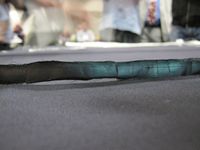
 Over at io9, they have a
Over at io9, they have a  On Friday, August 12th, the next installment of the
On Friday, August 12th, the next installment of the  Friday, August 12th, marks the official start of the 2011
Friday, August 12th, marks the official start of the 2011 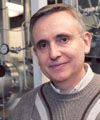 Dr.Vesselin Shanov is an Associate Professor of Chemical and Materials Engineering at the University of Cincinnati. He received his MS in Electronic Materials from the Technological University of Sofia, Bulgaria in 1970. In 1980, he completed his PhD in Solid State Chemistry at the University of Regensburg, Germany and at the Technological University of Sofia, Bulgaria.
Dr.Vesselin Shanov is an Associate Professor of Chemical and Materials Engineering at the University of Cincinnati. He received his MS in Electronic Materials from the Technological University of Sofia, Bulgaria in 1970. In 1980, he completed his PhD in Solid State Chemistry at the University of Regensburg, Germany and at the Technological University of Sofia, Bulgaria. Dr. Yakobson received his PhD from the Russian Academy of Sciences in 1982. He is currently the Karl F. Hasselmann Chair in Engineering, a Professor of Materials Science and Mechanical Engineering and a Professor of Chemistry at Rice University.
Dr. Yakobson received his PhD from the Russian Academy of Sciences in 1982. He is currently the Karl F. Hasselmann Chair in Engineering, a Professor of Materials Science and Mechanical Engineering and a Professor of Chemistry at Rice University. Dr. Bryan Laubscher, Physicist, long-time Space Elevator enthusiast and the principle behind Odysseus Technologies, a start-up carbon nanotube spinning company, will appear on Dr. David Livingston’s
Dr. Bryan Laubscher, Physicist, long-time Space Elevator enthusiast and the principle behind Odysseus Technologies, a start-up carbon nanotube spinning company, will appear on Dr. David Livingston’s 





 Markus Klettner, Executive Director of
Markus Klettner, Executive Director of 
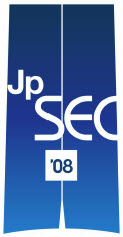 This post courtesy of
This post courtesy of 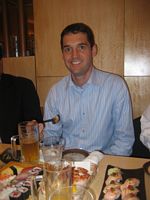

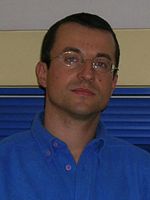



 Concerns have been raised by many about how safe it would be to release carbon nanotubes into the environment. Some of this is overblown I think as nanotubes occur in small quantities naturally (as a byproduct of a wood fire, for example). Nevertheless, I think the concerns are real and I’m glad that research is ongoing on this subject, especially as one sees stories now (like
Concerns have been raised by many about how safe it would be to release carbon nanotubes into the environment. Some of this is overblown I think as nanotubes occur in small quantities naturally (as a byproduct of a wood fire, for example). Nevertheless, I think the concerns are real and I’m glad that research is ongoing on this subject, especially as one sees stories now (like 















 In last year’s
In last year’s  I found
I found 
 The first half of this 25 minute long YouTube video (originally from
The first half of this 25 minute long YouTube video (originally from 
 I received this from Andy Price. That Newton guy was one smart fellow…
I received this from Andy Price. That Newton guy was one smart fellow… Over at the
Over at the  However, I’m going to branch out a bit, though, and begin covering carbon-nanotube news items that are, IMHO, space-elevator related. I don’t think it’s a stretch; we’re not going to have a Space Elevator until carbon-nanotube technology gets to the point where we can build one. News in this area is relevant to all of us who believe that a space elevator is a much more sane way to get out of earth’s gravity well.
However, I’m going to branch out a bit, though, and begin covering carbon-nanotube news items that are, IMHO, space-elevator related. I don’t think it’s a stretch; we’re not going to have a Space Elevator until carbon-nanotube technology gets to the point where we can build one. News in this area is relevant to all of us who believe that a space elevator is a much more sane way to get out of earth’s gravity well.